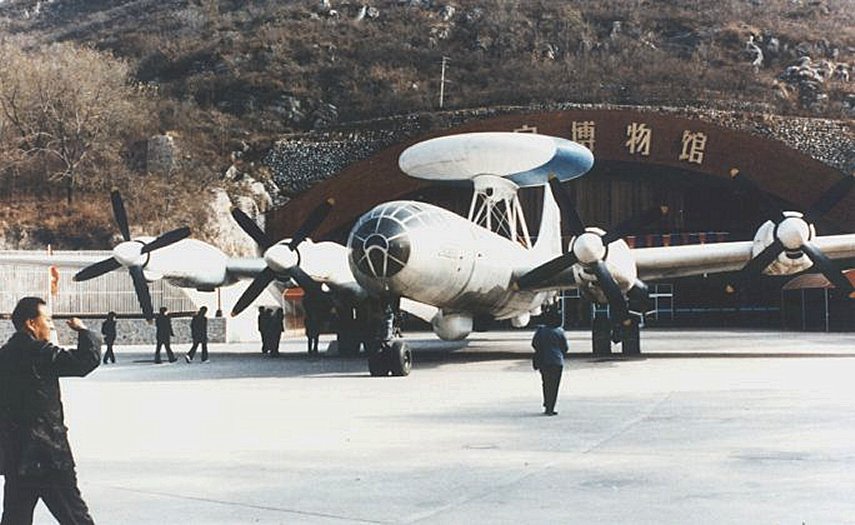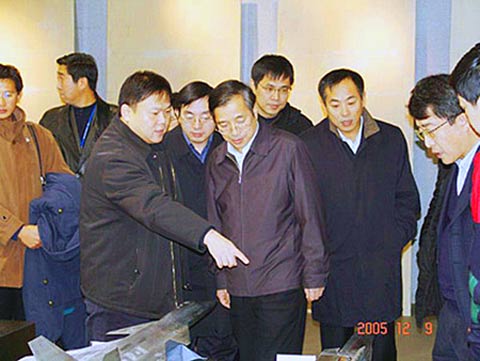Dr. Alexandr Nemets and Dr. Thomas Torda
Tuesday, July 9, 2002
Situation at the End of 2001
In mid-2000, the authors compiled a comprehensive report on China's construction – based on Russian technology – of a multi-level air defense network covering most of China's coast. The essence of this report – which did not attract the attention of U.S. officials – was used in the book "Chinese-Russian Alliance" (compiled in July 2001, to be published by NewsMax in September 2002).
Much has changed in this area – just as in other PLA sectors – in a year, however; this article is an attempt to track the most significant changes.
In 2000-2001, China's People's Liberation Army (PLA) adopted the concept of "offensive and defensive character" for the PLA Air Force (PLAAF) instead of the purely "defensive Air Force" concept used for many years – and began implementing it. This immediately resulted in an acceleration of PLA air defense troop development; most of these troops, and almost all long-range and mid-range air defense missile systems, are subordinate to the PLAAF.
What is even more important, in 2001, both the PLAAF and PLA ground forces (focusing on anti-aircraft artillery and air defense missile (ADM) systems of short range and low altitude) concentrated efforts on the improvement of "san da" (three strikes) capabilities, which meant "strike at the enemy's stealth fighters, cruise missiles and attack helicopters."
Development of PLA air defense troops – more precisely, an air defense multi-level network – became even more accelerated. By the end of 2001, this network effectively covered the coastal, most-developed regions of the country as well as the most important areas in the internal regions, and generally included four major levels:
- Long-range, high-altitude ADM systems, represented by Russian-made S-300 systems as well as their Chinese-made copies and "derivatives" (given below). They are subordinate to the PLAAF.
- Mid-range, mid-altitude ADM systems, represented mostly by Russian-made TOR-M1 systems, their Chinese-made derivatives (given below) and "original Chinese" KS-1 systems. They are mostly subordinate to the PLAAF.
- Short-range, low-altitude systems, represented primarily by Chinese-made copies of the Russian Tunguska missile-artillery system (mostly subordinate to PLA ground forces).
-
- Shoulder-launched missiles of Russian and Chinese origin and Chinese-made anti-aircraft artillery (almost entirely concentrated in PLA ground forces).
At this point it would be proper to quote the article "[Major] Developments in China in the Military Area in 2001," published by the Taiwan-based journal Chung-Kung Yen-chiu (PRC [People's Republic of China] Research) in February 2002:
Presently the PLA is equipped with Russian-made S-300 PMU1 long-range ADM systems, [Russian-made] Tor-M1 field ADM [systems], "Feimeng" improved ADMs for ultra-low altitude, KS-1 mid-range ADMs, and QW-1 shoulder-launched ADMs; they form an all-range road-mobile ADM network.
In addition, the PLA acquired the FT-2000 "anti-radar missile system," to be used against the enemy's electronic warfare aircraft of various kinds and AWACS aircraft. The FT-2000, 6.8 m in length, 0.466 m in diameter, 1.3 tons in weight, has a range between 12 km and 100 km and an effective altitude between 3 km and 20 km. Each FT-2000 launcher has four missile-launching vertical tubes on the mobile platform; the FT-2000 system in its outer appearance is extremely close to the Russian S-300 system." (end of excerpt)
They forgot to mention the Chinese-made (reverse engineered) version of Russia's Tunguska system, known as GPZ-954. (Perhaps Feimeng is just the new name for it?)
One can claim that, by the end of 2001, PLA inventories included many hundreds of road-mobile systems of three upper levels and many thousands of weapons for the lowest level.
Situation in 2002
During the first half of 2002, this air defense network continued its quantitative expansion and qualitative upgrading. The following report characterizes this trend:
(Moscow-based Vedomosti newspaper, April 30, 2002, briefly):
In early April (April 4, by some data), Rosoboronexport (the Russian weapons export monopoly) signed a contract to sell two S-300F ship-borne anti-aircraft complexes to China for $200 million. The contract has increased the newly established (by President Putin's order signed in mid-April) Almaz-Antei Corp. parcel of orders by 50 percent. The Altair Enterprise is the company that produces the S-300F complex. Altair and 20 other designers and producers have become parts of Almaz-Antei.
The S-300F complex is a ship-borne replica of the S-300 anti-aircraft complexes. Beijing plans to install the RIF complexes (the name of the export version of the S-300F) on two warships that will be built in China by 2005. An expert from the Russian Air Force said that the S-300F complexes would be installed by China on cruisers designed by Chinese specialists.
In addition to this contract, Almaz-Antei will receive a contract to build the S-300 anti-aircraft complexes for China ($400 million). As a result, the total sum of its contracts will increase to $600 million. (end of report)
This report was confirmed by publications in the Taiwan and Hong Kong media on June 12-13, 2002, which specified that China is building, with Russian assistance, two "super-Sovremenny" destroyers, to be equipped by RIF ADM systems with a range up to 120 km.
Remarkably, the Chinese air defense network could spread to the sea, as a result of RIF installation on naval vessels, for at least 200 km. Earlier, Chinese frigates and destroyers could barely defend themselves from air strikes. However, Chinese destroyers of the new generation will become "outposts" of a coast-based air defense network.
Just as in the case of weapon platforms of other kinds, China's defense industry does it best for "guochanhua" (reverse engineering) of Russian-made ADM systems.
In 2002-2003, China very probably will master – or has already mastered – serial production of
the following systems, whose development has been under way, based on Russian technology, since 1999-2000:
- HQ-15. This is the slightly improved version of Russia's long-range high-altitude S-300 PMU1/PMU2 system, with a range up to 120 km and an altitude up to 25 km.
- HQ-16 or "super-Tor-M1." This is an all-new ADM system, jointly under development with Russia. It is a mid-range system, effective against low- to medium-altitude (100 m to 20 km) targets. The system's reaction time (time between target detection and missile launch) is 6-8 seconds.
A single missile system can simultaneously attack eight aircraft or missile targets, with a target-hit probability of 90 percent for any of these targets. The system uses the currently most-advanced vertical launching technology, a phased-array radar, and a composite-guidance warhead. Plans call for the HQ-16 to widely enter PLA service about 2005.
- HQ-17. This is a slightly improved version of the Russian Tor-M1 system with a range up to 30 km and altitude up to 15 km. In 2000, the PLA decided to construct, by 2002-2003, between 10 and 12 air defense brigades equipped with hundreds of Tor-M1s and HQ-17s, as well as Chinese original KS-1 and KS-1A ADM systems.
- HQ-18. This is a slightly improved version of the Russian S-300 V system. Its major characteristics somewhat surpass those of the HQ-15.
All the listed systems are road-mobile, just like the original S-300 and Tor-M1.
- Feimeng (?) PGZ-95, having its prototype in the Russian Tunguska missile artillery system. It combines one ADM launcher and four 25 mm anti-aircraft guns on a single mobile platform. The system, with an altitude up to 3.5 km and a range up to 6 km, provides high-density fire and reportedly is extremely effective against cruise missiles and fighters of the fourth generation (F-15s, F-16s and F-18s). Serial production was mastered in 1999.
- Shoulder-launched anti-aircraft missiles. This includes hundreds of Russian-made Igla missiles and their Chinese derivatives. This is in addition to China's original HQ-1, HQ-2 and HN-5 missiles.
PLA Navy: From 'Green Water' to 'Blue Water' – Part I
Dr. Alexandr Nemets and Dr. Thomas Torda
Friday, July 26, 2002
In the first half of 2002, the attention of Western military specialists was drawn to two large-scale contracts concluded by China and Russia and aimed at PLA (People's Liberation Army) Navy modernization:
- construction of two Sovremenny-class missile destroyers, for $1.4 billion;
- construction of eight upgraded Kilo-class diesel-electric submarines, for $1.6 billion.
General Structure of the Chinese Shipbuilding Industry
Remarkably, China has a comparatively modern shipbuilding industry; this definitely facilitates PLAN development.
In July 1999, China General Shipbuilding Company was divided, for the purpose of "socialist competition" and accelerated development, into China Shipbuilding Industry Group Corp. (SIGC) and China Shipbuilding Heavy Industry Group Corp. (SHIGC).
SIGC includes several large shipbuilding plants in Shanghai and Guangzhou Shipbuilding Plant, producers of diesel engines and other equipment for vessels. SHIGC includes Dalian Shipbuilding Plant, Dalian New Shipbuilding Plant and Qingdao Shipbuilding Plant, producers of diesel engines for vessels, etc.
During the year 2000, SIGC finished construction of 112 civilian vessels, a total of about 2 million tons deadweight. The volume of production and export increased by about 45 percent from the 1999 level.
Shanghai-based Hudong Shipbuilding Plant, Shanghai-based Jiangnan Shipbuilding Plant and the Guangzhou (capital of Guangdong province) Shipbuilding Plant provided more than 80 percent of the finished deadweight. Several vessels have a deadweight of 80,000-100,000 tons each.
The same year, SHIGC finished construction of 72 civilian vessels, a total of about 1.5 million tons deadweight. Dalian Shipbuilding Plant and Dalian New Shipbuilding Plant provided at least 80 percent of the finished deadweight; this included a 300,000-ton oil tanker for Iran.
By mid-2002, total annual capacity of the two Dalian-based plants approached an estimated 5 million tons deadweight.
Together, the two companies constructed, in 2000, civilian ships of about 3.5 million tons total deadweight. This volume approached 4.5 million tons in 2001 and, by preliminary estimate, could surpass 5 million tons in 2002.
In addition, SIGC and SHIGC annually produce several hundred diesel engines of large capacity and much other equipment for vessels, including sophisticated electronics for control and navigation.
http://archive.newsmax.com/archives/articles/2002/7/25/161633.shtml
Read Part II of this article.
China's Guochanhua (Reverse Engineering)
Dr. Alexandr Nemets and Dr. Thomas TordaBrief History of 'Guochanhua'
Thursday, June 13, 2002
The July 1960 break in the Sino-Soviet alliance definitely wasn't a one-time event. The Chinese leaders understood the inevitability of separation by 1958 and did their best to accumulate by all means available - including direct theft - thousands and thousands of sets of the most-advanced Soviet technologies, i.e., weapons know-how, dual-use goods and heavy machinery.
After July 1960, China proclaimed the general course of "basing on our own forces" and concentrating forces on reproducing (reverse engineering, or "guochanhua" in Chinese) the Soviet technology.
China abandoned this autarchy and reinstated ties with the "outer world" after the start of the Great Reform in December 1978. And it appeared that, by the early 1980s, China had completed the reverse engineering of Soviet weapons and heavy machinery.
Generally, it is possible to claim that by about 1984, China acquired the capability to produce - and really master production of, sometimes in single copies - entire sets of Soviet weapons and dual-use products belonging to 1960-61 standards. This in particular included the following (Soviet name first, Chinese name in parentheses):























![[jxx_01.jpg]](https://blogger.googleusercontent.com/img/b/R29vZ2xl/AVvXsEjRj_mPvwthe2H0qmu84pDT7QnSdUZJVa-T5IaJaiGZCCIIJqM6G6nq0RXQvEpcRVJjswnT8jZuAwUiEFbPy7OiUoSMtD_mM423Tkry1clt1E2kgkcbj9TKr0bdAYhMGvy2kXdqB7fbGsg/s1600/jxx_01.jpg)









